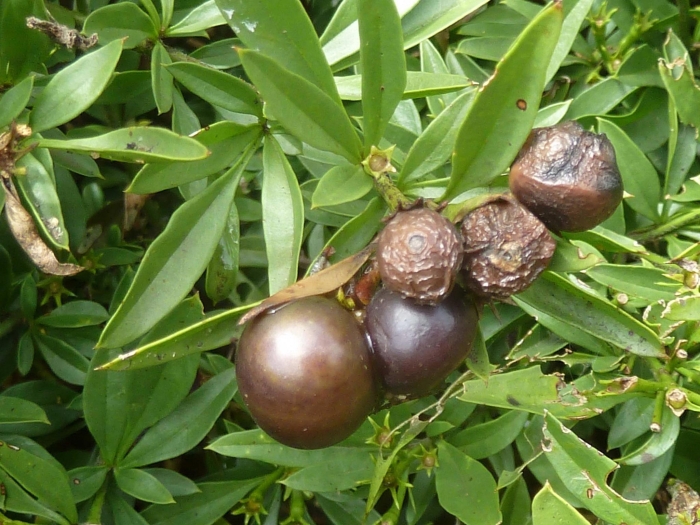Star Jasmine
(Jasminum quinatum)
Star Jasmine (Jasminum quinatum)
/
/

© Andrew Hankey
CC BY-SA 4.0
Image By:
© Andrew Hankey
Recorded By:
Copyright:
CC BY-SA 4.0
Copyright Notice:
Photo by: © Andrew Hankey | License Type: CC BY-SA 4.0 | License URL: http://creativecommons.org/licenses/by-sa/4.0/ | Uploader: andrew_hankey | Publisher: iNaturalist |




Estimated Native Range
Summary
Jasminum quinatum, commonly known as Star Jasmine, Chinese Star Jasmine, or Confederate Jasmine, is a fast-growing evergreen vine. It is native to open woodlands and forest edges in Southern Africa. This species thrives in a variety of habitats, including grassy slopes and along streams, where it can climb trees and other structures to reach sunlight. It can grow to a height of 10-20 feet (3-6 meters) and a width of 4-8 feet (1.2-2.4 meters), with slender stems and glossy, dark green leaves. The plant is well-known for its fragrant, star-shaped white flowers that bloom profusely in the spring and summer, adding a delightful scent to gardens and landscapes.
Star Jasmine is valued for its ornamental qualities, including its fragrant flowers and attractive foliage. It is often used for covering trellises, walls, and fences, and can also serve as a ground cover. The plant is relatively easy to maintain and can be pruned to shape as desired. It prefers full sun to part shade and adapts to a range of soil types, including clay, loam, and sandy soils, provided they have medium drainage. Regular watering is recommended, especially during dry periods. While it is not typically prone to serious pest or disease problems, it can be susceptible to scale insects and root rot if overwatered. Gardeners should be aware that Jasminum quinatum can become invasive in some regions outside its native range, so it is important to check local regulations and guidelines before planting.CC BY-SA 4.0
Star Jasmine is valued for its ornamental qualities, including its fragrant flowers and attractive foliage. It is often used for covering trellises, walls, and fences, and can also serve as a ground cover. The plant is relatively easy to maintain and can be pruned to shape as desired. It prefers full sun to part shade and adapts to a range of soil types, including clay, loam, and sandy soils, provided they have medium drainage. Regular watering is recommended, especially during dry periods. While it is not typically prone to serious pest or disease problems, it can be susceptible to scale insects and root rot if overwatered. Gardeners should be aware that Jasminum quinatum can become invasive in some regions outside its native range, so it is important to check local regulations and guidelines before planting.CC BY-SA 4.0
Plant Description
- Plant Type: Vine, Shrub
- Height: 10-20 feet
- Width: 4-8 feet
- Growth Rate: Moderate
- Flower Color: White
- Flowering Season: Spring, Summer
- Leaf Retention: Evergreen
Growth Requirements
- Sun: Full Sun, Part Shade
- Water: Medium
- Drainage: Medium
Common Uses
Bee Garden, Border Plant, Fragrant, Low Maintenance, Potted Plant, Showy Flowers
Natural Habitat
native to open woodlands and forest edges in Southern Africa
Other Names
Common Names: Chinese Star Jasmine, Confederate Jasmine
Scientific Names: , Jasminum quinatum, Jasminum lupinifolium, Jasminum tortuosum, Jasminum tortuosum,
GBIF Accepted Name: